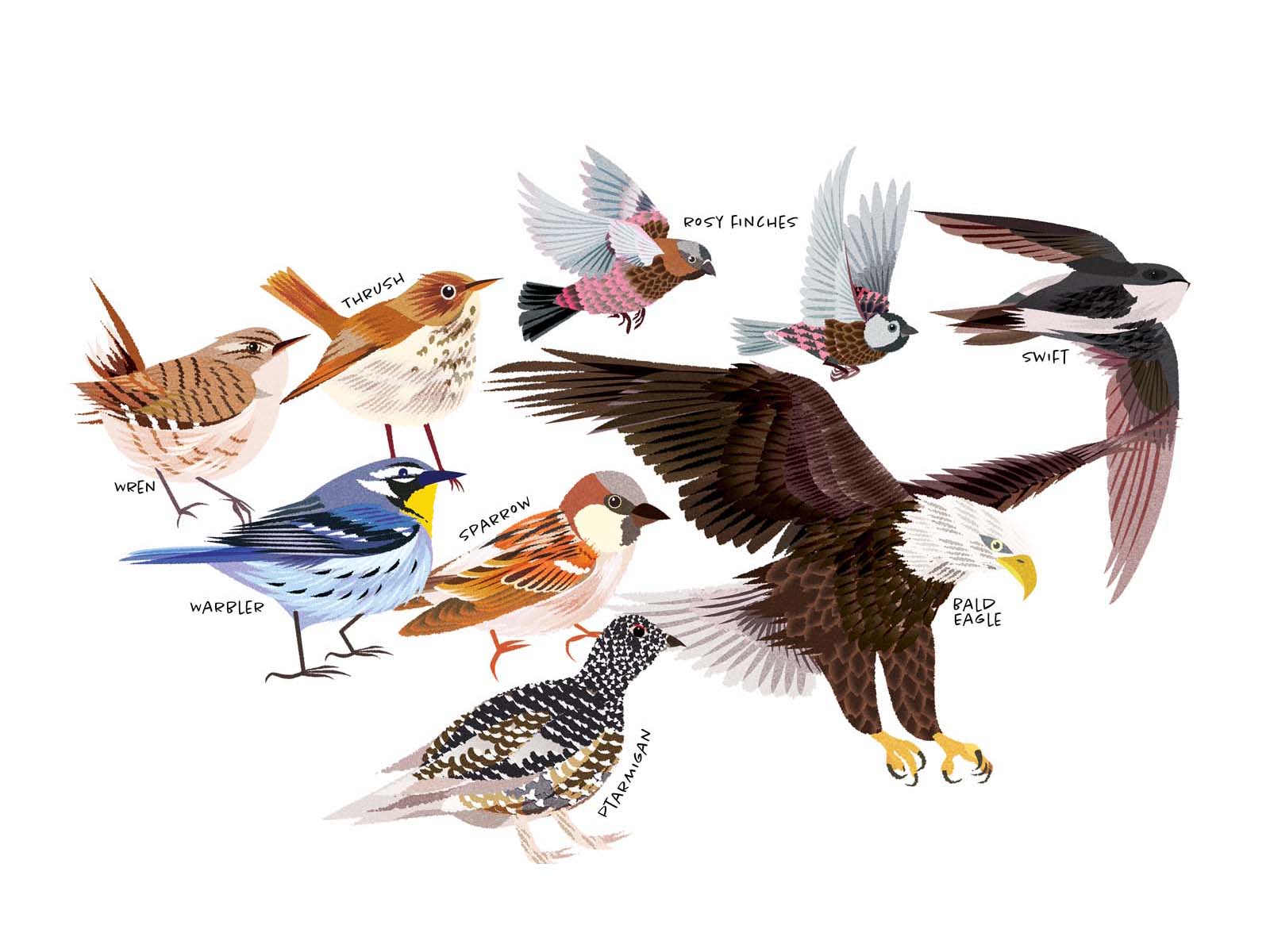The Local newsletter is your free, daily guide to life in Colorado. For locals, by locals.
For avian lovers, 2018 is a 12-month birding bonanza. Organizations such as the National Audubon and National Geographic societies are commemorating the centennial of the Migratory Bird Treaty Act—which protects nomadic flyers from being captured, sold, or bought—with the #birdyourworld campaign, encouraging bird fans to partake in one avian activity each month this year. If you’re behind schedule, consider these four ways to encounter winged friends in Colorado before the calendar closes on the year of the bird.
1. Band Together
Barr Lake State Park
Typically, it’s difficult to spy small, beautiful songbirds (warblers, thrushes, wrens, sparrows) without fancy binoculars. Fortunately, the Bird Conservancy of the Rockies provides an up-close look for visitors to Barr Lake State Park in Brighton. The nonprofit’s trained staffers retrieve migratory birds—which they’ve caught using massive but harmless nets—to record data such as species, age, sex, and fat content. They then attach tiny bands marked with unique numbers to the birds’ legs so other researchers will have some idea of their migration patterns and overall populations. Anyone can observe the chirp-filled spectacle from 7 to 11:30 a.m. Tuesdays through Sundays—at least until October 15, when the program hibernates for winter.
2. Spot Snowbirds
John Martin Reservoir State Park
In October, close to 1,200 bald eagles begin to descend on Colorado, drawn to our milder winter climate. John Martin Reservoir State Park, about 80 miles east of Pueblo, is the best location to see them, though any large body of water with lots of tasty fish should draw a fair number of America’s favorite bird. The eagles emerge most frequently at sunrise, so book a campsite at John Martin’s open-year-round Lake Hasty Campground and wake up early for a light-streaked gazing session.

3. Drive a Trail
The Front Range
It’s taken 15 years, but the last piece of the Colorado Birding Trail was finally completed in May. The network, which consists of 54 driving routes, takes birdwatchers to nearly 800 public and private sites where the scenery is stunning and the avians are plentiful. We recommend traversing the Peak to Peak path, which skirts popular Front Range locales such as Mt. Evans and Guanella Pass. This month, the roughly 300-mile route affords glimpses of rosy finches migrating below treeline and white-tailed ptarmigans transitioning from their mottled summertime brown to a camouflaging winter white.
4. Read a Book
Anywhere
On the first Tuesday morning of the month from October to April (and every Tuesday from May to September), renowned naturalist Rebecca Weiss teaches birding classes through the Aspen Center for Environmental Studies. If that’s a difficult appointment to fit into your 9-to-5 grind, there’s another way to learn her secrets. The hefty guidebook Birds of Aspen and the Roaring Fork Valley, which she and Carbondale photographer Mark Fuller released in July, features images of 155 species, detailed habitat info, tips to inspire the bird-curious, and fun facts. (Did you know the white-throated swift only lands in the vertical crevices of sheer rock faces? We were surprised, too.)









